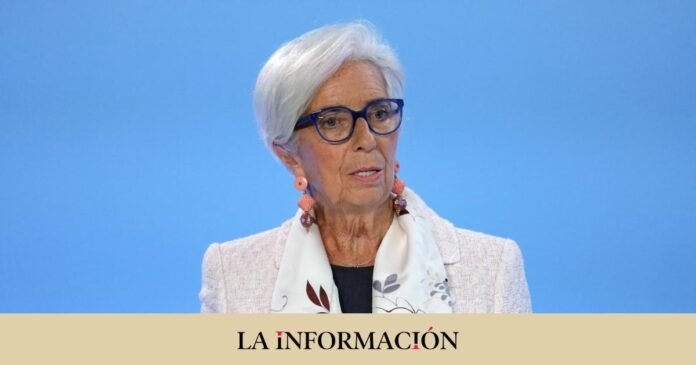The publication of the stress tests for banks by the European Banking Union (EBA) has eliminated any risk that the European Central Bank (ECB) limits or places restrictions on the dividend policies and share repurchase plans of the Spanish banks even in the worst possible macro scenario. Especially when two entities have just launched two new programs (BBVA and Caixabank) and another of them is immersed in executing the one that had been announced for this year (Banco Sabadell).
The tests to which the 70 largest European entities have been subjected only confirm the solidity of the European banking system. In the most adverse macro scenario, with a drop in GDP of 6% accumulated in three years, persistent inflation, interest rates that are also high, with rising unemployment rates and significant falls in housing prices, the impact on the capital would be 459 basis points up to 10.4% for all European banks. All in all, this blow would be less than in the previous test, when it amounted to 485 basis points, placing the ratio at 10.2%.
But this examination that the EBA submits to European banks serves as a guide for the European Central Bank to establish capital requirements. In fact, the EBA document confirms that these results will be considered as part of the Pillar 2 requirements. By 2023 these ranged from 225% required for Unicaja Banco to 1.29% for Bankinter. “While the banks comply with the ECB’s capital requirements, the risk that the supervisor could set limits or control the banks’ dividend policies fades away,” sources from the financial sector explain to La Información, who stresses that taking into account Taking into account the capital that they would destroy in the adverse scenario, the Spanish banks would have a surplus to maintain their dividend policies.
And more so taking into account that the stress tests did not show the capital generation data for the first semester. “Additionally, we have made a comparison of the level of capital to 2025 under the adverse scenario, with the generation of capital in the first semester, with the SREP requirements for 2023. What we see is that all entities would meet the capital requirements in the adverse scenario, with greater leeway if possible once the generation of capital until June is included”, explain these same market sources.
With this perspective, the final picture of the Spanish banks would improve that of the European banks. In the adverse scenario, the impact on Bankinter’s capital would be 165 basis points, until its CET 1 ‘Fully Loaded capital requirement is 10.3%. To which should be added an additional 0.3% in the first semester to 10.3%, while the regulatory requirements for the entity headed by María Dolores Dancausa is 7.7%.
This same situation is repeated in the rest of the Spanish banks listed on the Ibex. 35. For Banco Santander, which on February 28 raised the ‘pay out’, the percentage of the profit that it allocates to remunerating the shareholder to 50%, the CET 1 plus the capital generated in the first six months of the year amounted to 10 .5, compared to requirements of 8.9%, the highest of all Spanish banks and despite the fact that it would suffer a drop of 170 basis points in the adverse scenario.
For its part, Unicaja Banco would have been the entity that would have generated the most capital in the first half of the year, 0.8%, which would raise capital to 10.5% if the adverse scenario materialized in 2025. , compared to requirements of 8.3% and despite the fact that the stress tests calculate that there would be a destruction of capital of 326 basis points.
BBVA and Caixabank have just announced share buybacks
These stress tests also serve as support for the share repurchase plans in which three Ibex 35 entities are immersed. appropriate from the regulator. Caixabank also announced on Friday its intention to buy 500 million euros in shares, while Banco Sabadell for an import of 204 million, which already has the approval of the ECB.
In the case of the entity chaired by Carlos Torres, the requirements would be around 8.7% in the adverse scenario, while the ratio, despite ceding capital by 295 basis points, would be almost 9.7%, to which It would be necessary to add an additional 0.4% of capital up to 10%, according to market estimates. For its part, Caixabank would end up at 9.4%, compared to requirements of 8.4%. In the case of Banco Sabadell, the stress tests calculate that the capital ratio would fall to 8.8% in the case of the adverse scenario, which together with the capital generated up to June, would allow it to rise to 9.1% compared to CET 1 ”phase in’ of 8.7%. The bank’s starting point this year is 12.6%.

